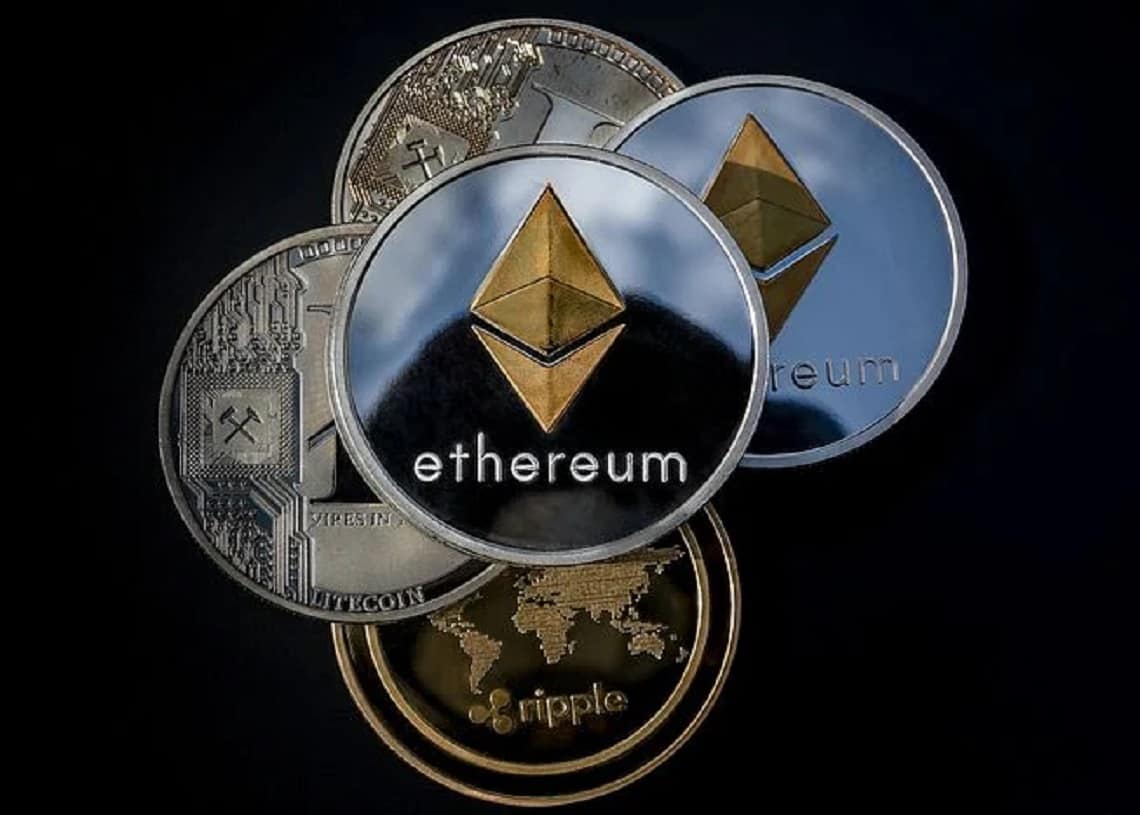Before the Merge, Ethereum is one of the easiest cryptocurrencies to mine as no complex ASIC hardware is required. Anyone can mine ETH with their GPU unit at home. However, to really make a substantial profit, you need to build a miner with at least several GPUs and tune them for maximum efficiency. Additionally, there are several other key things to know about Ethereum mining. Therefore, in this article, let’s take a closer look at the main aspects of ETH mining in those days when you can still mine Ethereum (before the Merge). As Ethereum is switching entirely to proof of stake by end of the year, it is suggested to start staking now, since it is active, instead of buying GPU or ASIC. Otherwise, these GPUs can later be used to mine other cryptos when mining Ethereum becomes obsolete.
Can Ethereum be mined?
Same as Bitcoin, Ethereum was previously mined with a Proof of Work protocol, like Bitcoin. The only means to update a new block of Ether transactions is only through mining. Mining refers to maintaining the Ethereum ledger by solving complex mathematical problems. Ethereum blockchain still uses a proof-of-work mining algorithm, allowing anyone to use their GPUs to help sustain the network. This, however, is set to change with the Proof-of-Stake algorithm taking over fully at the end of the following years unless some new source of sustainable energy is found.
How do I mine Ethereum?
Mining Ethereum is relatively simple to start. All you need is a basic computer that supports several GPU`s as running with only a single graphics card takes a lot more time to regain your investment. From there, you install Ethereum mining software and join a mining pool. Over time, you receive rewards based on your hashing power and uptime. Therefore, make sure your rig runs without interruptions.
Three Ways to Mine Ethereum
Pool Mining
Pool mining allows you to share your mining power and distribute rewards without less risk for not receiving anything from a single reward block. Therefore, it is the preferred way to operate unless you own a huge mining farm that can hash a big enough part of the overall network hashing power to reduce the huge variance in the reward distribution.
Mining Alone
Mining alone is not recommended as running a single or even several GPUs at once still creates a very small chance that you will be the one that will receive each of the ETH block rewards. Therefore, the best option is to join a mining pool and reduce the variability of receiving mining rewards.
Cloud Mining
For several years, cloud mining has been available as huge mining companies started to sell some of their mining power to lock in future profit. By using a cloud mining solution, you can simply purchase hashing power by paying a fixed price per period of time. As this requires no further work from you, it is a very easy way to mine Ethereum. However, there are always debates whether it is even profitable to cloud mine.
Ethereum Mining vs Bitcoin Mining

One of the biggest challenges the Bitcoin network is facing right now is the centralization of Bitcoin mining. About ten years ago, when the network was invented, people could mine Bitcoin using a strong desktop computer or even a laptop. This, however, has changed dramatically over the past years. With the development of advanced ASIC miner rigs, the only companies that can make a profit from mining are giant mining farms equipped with massive mining equipment infrastructure.
On the other hand, the process of mining Ethereum is quite different from Bitcoin. The Ethereum Network rewards miners depending on the proof-of-work algorithm dubbed Ethash. This algorithm supports decentralized mining of Ether by individuals and does not support ASIC mining. However, securing a powerful enough computer unit can be expensive, and it will add to your electricity bill.
The Bitcoin Network halves its mining rewards every four years to control the inflation rate of the scarce supply of Bitcoins. The current price of successfully mining a Bitcoin block is 6.25 BTC. On the Ethereum blockchain, the successful mining of one Ethereum block is priced at three Ether, including all transaction fees and code-processing fees, based on the Ethash algorithm.
It takes about ten minutes or more on average to successfully verify and mine one block of Bitcoin transactions. On the other hand, the ETH network takes about 12 seconds or more to mine a block of Ether transactions. This means you can mine more blocks of Ether transactions in the same amount of time taken to confirm and mine one block of Bitcoin.
How does Ethereum Mining Work?
Ethereum mining works by connecting a group of miners together in a single network, with each of them competing for who will find the next block hash. If a miner finds a hash that matches the latest aim, they will be rewarded using ETH and relay the block across the entire blockchain for each node to confirm and record in their smart ledgers. For instance, if miner Y finds the hash first, the other miners will stop work on the block at hand and start targeting the upcoming block.
After roughly every 12-15 seconds, an Ethereum miner finds a hash. Suppose the miners begin solving the mathematical calculations faster or even slower than standard. In that case, the algorithm is programmed to alter the mining difficulty to maintain the about 12- seconds designated task time. Miners randomly earn ETH, and the profitability of each is based on luck and their computer hash rate. As more miners join the network, the problem becomes even more difficult to solve, demanding additional computational power as rewards decrease. However, as the value of Ether keeps rising, the rewards that miners receive remain sufficient.

Before you start mining Ethereum, a few clarifications and preparations must be done. Let’s see what you know about the mining pool, Etherum wallet, and terms all relative to the Ethereum blockchain. Briefly, I’ll take you through the following discussions:
The Ethereum mining difficulty chart provides the current Ether mining difficulty (ETH diff) target, as well as a historical data graph visualizing Ethereum mining difficulty chart values with ETH difficulty adjustments (both increases and decreases), defaulted to today with timeline options of 1 day, 1 week, 1 month, 3 months, 6 months, 1 year, 3 years, and all time.
The hash function employed is called Ethash and is a modified version of Dagger-Hashimoto which uses the Keccak algorithm (eventually standardized to SHA-3. The Ethash design rationale states:
“GPU friendliness: We try to make it as easy as possible to mine with GPUs.”
Ethash is based around the provision of a large, randomly generated DAG (directed ayclic graph) dataset and working to solve some particular constraint on it, partially derived from the block’s header hash.
A DAG is generated for every epoch (that is 30000 blocks or ~100 hours) and since it only depends on the block number, it can and should be generated in advance to avoid long waits at epoch transitions. To generate a DAG for an arbitrary epoch using the geth client execute:
geth makedag <block number> <outputdir>
For example, “geth makedag 360000 ~/.ethash” — note that ~/.ethash is the path under Linux/Mac, while in Windows it’s usually ~/AppData/Ethash.
In the Ethereum blockchain technology road map, there’s a plan to transition to Proof of Stake which will render the current Proof of Work obsolete. The Ethereum Github mining page states:
“Becoming an Ethereum miner is not recommended. Ethereum is going to transition to proof-of-stake, making Ethereum mining obsolescent.”
When deciding to start mining Ether, one should consider Ethereum’s transition to proof-of-stake in the major 2.0 upgrade. Once that upgrade takes place all the hardware invested in Proof-of-Work will immediately become useless.
On the other hand, accumulating Ether through mining Ethereum in anticipation of PoS may also prove a profitable long-term strategy as the rewards earned in a PoS consensus arrangement is proportional to the amount of Ether staked in the system.
How many Ethereum can you mine in a day?
According to the hash rate, mining difficulty, and electricity, the number of Ethereum you can mine in a day can be computed. In addition to these factors, how many Ethereum you can mine is decided. You should even incorporate the cost of the device and the maintenance expenses at the time of calculating the ROI.
As an example, according to the current difficulty level of Ethereum, which is 2418530528083430 and generates a block reward 3.00000000, you can mine 0.01071725 daily.
The computational difficulty of solving a block is dynamically calibrated so as to produce a block every ~12 seconds — the systo-diastolic rhythm punctuating system state synchronization and assuring that rewriting of history and arbitrary blockchain reorganizations are impossible unless the attacker controls at least 51% of the network’s hashing power.
The market price of ETH naturally drives the changes in the network hash rate (the number of nonces tried per second) and difficulty.
The miner of a winning block receives both a static block reward of 2 Ethers and all of the gas consumed by the execution of the transactions included in the block (compensated for by the senders).
Extra rewards for including “uncles” (stale blocks which were very close to being “correct”) as part of the block is also included as an additional incentive for securing the network. Uncles are rewarded ⅞ of the static block reward and a maximum of two uncles is allowed per block.
Ethereum is yet to shift to Proof of Stake mining, till then its conventional Proof of Work mining algorithm, which consumes a lot of electricity and the risk associated with not getting any return is high. You can start mining Ethereum on a computer, once you fulfill all prerequisites.
How much does it cost to mine 1 Ethereum?
The cost of mining Ethereum will be dependent on power consumption cost and the purchasing power of 1 ETH. Due to frequent fluctuations in the price of Ethereum, the price varies daily. Based on the electric cost and the purchasing power of 1 ETH, you can calculate the cost to mine 1 Ethereum. Factors like hash rate, energy costs and proof of stake shift help decide whether to mine Ethereum is going to be profitable for you or not.
As with other PoW crypto-coins that spawned mining as an entire dedicated industry, hashing power is for the most part controlled by large mining pools where resources of different miners from different locations are pooled together and have rewards accordingly divvied up and distributed among miners relative to how many resources they contribute. In both Bitcoin and Ethereum, the top 5 mining pools control more than 70% of the market.
Etherscan provides a mining calculator for estimating expected earnings in Ethers and US dollars. It’s a rough approximation that assumes all conditions (difficulty, prices, etc.) remaining the same.

The Ethereum network validates incoming transactions into the blockchain using a proof-of-work scheme, similar to Bitcoin and other proto-currency crypto-ledgers. Mining is the process by which computations are verified and the network is secured, which also leads to the minting of new coins in Bitcoin and a gas market on Ethereum (gas being the internal currency used for paying for computational cycles executed by the EVM).
However, Ethereum’s roadmap includes a gradual transition to a more energy-efficient and higher throughput Proof-of-Stake consensus arrangement, eventually making the mining process obsolete. At present, however, the network operates on an ASIC-resistant memory-hard PoW hash function and Ether is usually mined with a GPU (graphics processing unit) setup.

Ethereum block structure. Detailed diagrams illustrating Ethereum’s architecture — transaction and block structure and the workings of the EVM (Ethereum Virtual Machine) as specified in the yellow paper are available at the dedicated stackexchange here.
What’s the process of mining Ethereum?
The Ethereum mining process is simple and clear cut:
- Set up a wallet
- Choose a suitable mining hardware
- Download the mining software and ETH client
- Join a mining pool
Setting up a wallet
MetaMask is the most commonly used Ethereum wallet. It’s a browser plug-in (as Firefox, Chrome or Opera extensions) that provides a convenient gateway to access the Ethereum network. Get the MetaMask extension for your respective browser and create an account. Choose a strong alphanumeric password and copy the recovery mnemonic somewhere safe.
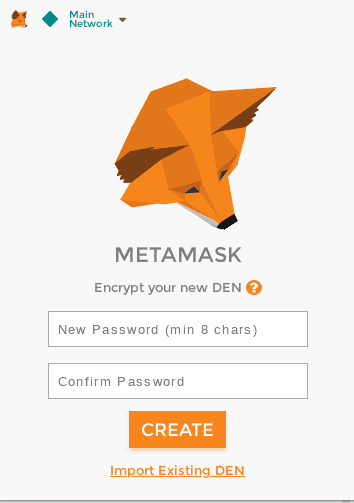
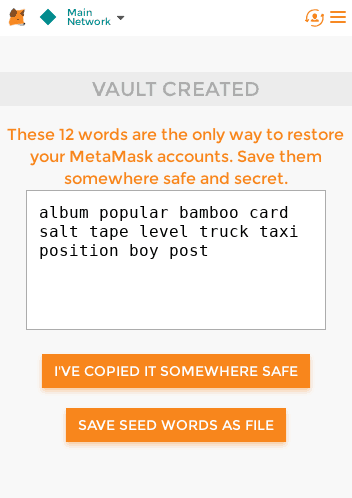
Your Ethereum address is automatically generated as the public key from the keypair.

Exodus is another popular option, a multi-currency Desktop and mobile wallet that supports close to a hundred crypto-tokens and digital assets and is easy to use, coming with ShapeShift integration for cross-chain conversions and swaps. It is supported cross-platform and can be downloaded from here.

Other options include the web-based MyEtherWallet (MEW), multi-currency supporting Jaxx (similar to Exodus), Atomic wallet and others. For better security, cold storage hardware wallets such as Ledger Nano and Trezor are recommended.
Choosing a suitable mining hardware
The graphics card is the mining hardware as a whole, while the GPU is a chip, part of the graphics card or an onboard similar, which stands for “Graphics Processing Unit”. No one should be bothered that GPU and graphics card are generally used interchangeably. PCs can be sold with an integrated Graphics Card (no separate card) or a discrete GPU. Although marketing teams might use slightly incorrect terms, the differences in terminologies are generally accepted or ignored.
Ethereum can be mined with ASIC and GPU, not CPU. Mining with a large GPU is profitable. Your graphics processing unit must have at least 3 GB of RAM to be able to start mining Ethereum. Radeon and GeForce are the most commonly used and reviewed GPU brands for mining Ethereum.
Choose an optimal solution depending on your budget for mining hardware – it must strike some balance between the highest number of hashes per second and power efficiency. When shopping for the best mining GPU, think about the memory of the GPU, as well as its power demands and cost.
It’s important to consider the GPUs value because when you start mining Ethereum, you won’t be yielding initially large amounts of cryptocurrency. Thus, minimizing initial costs as much as possible can maximize your profits and allow recovery of your initial investment as quickly as possible.
Ethereum mining testing
Before you initiate your mining operation, it is possible to establish a private test network to ensure everything is working well. This is an important tool if you want to test public contracts, try out new technology, or even examine your cryptocurrency mining processor capabilities. In the test tool, you are the sole user who runs the mining algorithm, which means you are tasked with finding all blocks, confirming transactions, launching smart contracts, creating DApps, and initiating transactions.
Having an idea of your average hash rate could be of massive importance when speculating about potential gains. This profitability calculator automatically aids in your hash rate depending on the hardware you are utilizing and the price of electric consumption in your country. Basically, aim for the highest possible hash rate, since the higher it is, the quicker the process of mining Ether.
Install Ethminer
In the next step to mine Ethereum, you are supposed to have software dubbed Ethminer for the windows operating system. Ethminer software enables your mining unit to run the hashing algorithm necessary to secure the network via proof-of-work. The primary user interface of its blockchain is a command line, but with the imminent launch of Ethereum 2.0, you can anticipate a friendlier interface.
AMD made headlines in 2017 when it released the AMD Vega 64, as not only was that graphics card good at gaming but it also quickly rose to fame as a cryptocurrency mining champion. The AMD Radeon VII takes things to a whole new level, tripling the Vega 64’s hash rate to 90MH/s right out of the box.
AMD Radeon VII is more powerful than the significantly pricier Nvidia Titan V, making the Radeon VII the new king of the cryptocurrency mining scene. It helped that this card was only $700 at the time of its introduction.

Set up your GPU or mining rig of multiple GPUs, corresponding drivers, etc. and proceed with downloading mining software and choosing a pool to plug into.
- Download mining software and Ethereum client
Choosing which mining software program to use will depend on one’s technical literacy and proficiency. Most commonly used are command-line programs such as Claymore’s Dual Miner and Ethminer.
For the less technically inclined, there are mining programs that have simple graphical user interfaces (windows, buttons, and menus) such as WinEth and MinerGate.
Miners also need to install a client that connects to and communicates with the Ethereum network. Geth is the most popular Ethereum client (written in Go). Once installed it can talk to other nodes and propagate gossip, providing an interface for on-chain contract deployment and executing transactions from the command-line.
- Join a mining pool
The top Ethereum mining pools by market share are:
– EtherMine – fee of 1%
– F2Pool – fee of 3%
– SparkPool – fee of 1%
– Nanopool – fee of 1%
It’s important to keep in mind that each pool has different payout structures, review the pools available and decide on which one to join based on each one’s specifics.

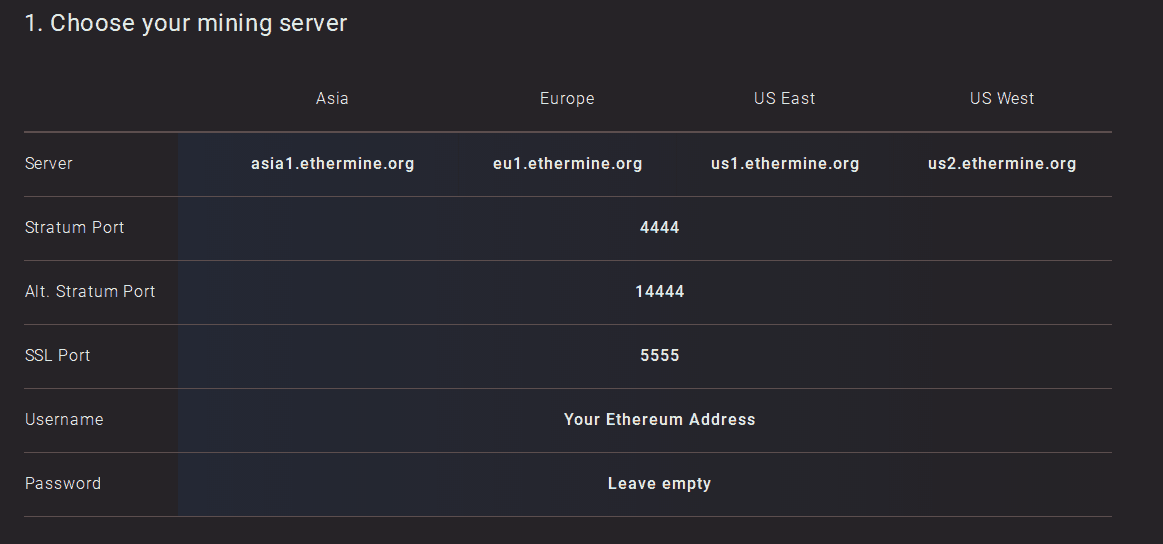
Using the Claymore miner from the command line, input the pool to connect:
EthDcrMiner64.exe -epool eu1.ethermine.org:4444 -eworker YOUR_RIG_NAME -ewal WALLET_ADDRESS_FOR_PAYOUTS -epsw POOL_PASSWORD
Your rig name could be any and there’s no password associated with Ethermine. Once launching the mining software, block rewards will be automatically paid out to the designated Ethereum address. The miner will generate a DAG file on each of the GPUs and begin hashing away. If everything goes smoothly, the output should look something like this:
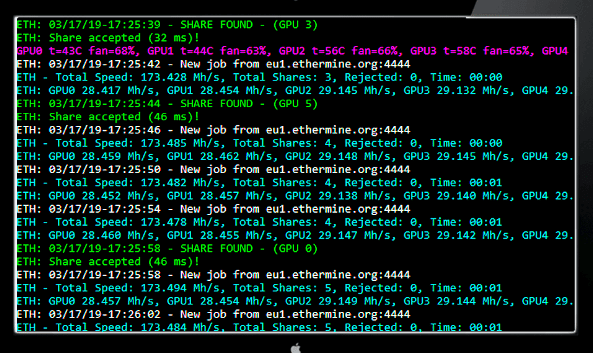
You can also set up your own mining pool. You can try MPOS and tutorials are a dime a dozen. This step by step guide is also good. If you see at the footer there, you find a link to the source code it is built from, on GitHub. Those interested in setting up a mining pool have found this guide for Ethereum and you might want to give it a try. Credit the encoder for the code and give proper acknowledgment. When you have your pool set up, you can get a commission from those who use your pool.
GPU mining with Ethminer
To mine with Ethminer:
eth -m on -G -a <coinbase> -i -v 8 //
To install ethminer from source:
cd cpp-ethereum cmake -DETHASHCL=1 -DGUI=0 make -j4 make install
To set up GPU mining you need a Coinbase account. It can be an account created locally or remotely.
Using Ethminer with Geth
geth account new geth --rpc --rpccorsdomain localhost 2>> geth.log & ethminer -G // -G for GPU, -M for benchmark tail -f geth.log
Ethminer communicates with Geth on port 8545 (the default RPC port in Geth). You can change this by giving the –rpcport option to Geth. Ethminer will find get on any port. Note that you need to set the CORS header with –rpccorsdomain localhost. You can also set the port on Ethminer with -F http://127.0.0.1:3301. Setting the ports is necessary if you want several instances mining on the same computer, although this is somewhat pointless. If you are testing on a private cluster, we recommend you use CPU mining instead.
Also, note that you do not need to give Geth the –mine option or start the miner in the console unless you want to do CPU mining on TOP of GPU mining.
If the default for Ethminer does not work try to specify the OpenCL device with: –opencl-device X where X is 0, 1, 2, etc. When running Ethminer with -M (benchmark), you should see something like:
Benchmarking on platform: { "platform": "NVIDIA CUDA", "device": "GeForce GTX 750 Ti", "version": "OpenCL 1.1 CUDA" }
Benchmarking on platform: { "platform": "Apple", "device": "Intel(R) Xeon(R) CPU E5-1620 v2 @ 3
The C++ implementation of Ethereum also offers a GPU miner, both as part of Eth (its CLI), AlethZero (its GUI) and EthMiner (the standalone miner).
NOTE: Ensure your blockchain is fully synchronized with the main chain before starting to mine, otherwise you will not be mining on the main chain.
When you start up your Ethereum node with Geth it is not mining by default. To start it in mining mode, you use the –mine command line option. The -minerthreads parameter can be used to set the number of parallel mining threads (defaulting to the total number of processor cores).
Geth –mine –minerthreads=4
You can also start and stop CPU mining at runtime using the console. miner.start takes an optional parameter for the number of miner threads.
> miner.start(8) true > miner.stop() true
Note that mining for real Ether only makes sense if you are in sync with the network (since you mine on top of the consensus block). Therefore the eth blockchain downloader/synchroniser will delay mining until syncing is complete, and after that mining automatically starts unless you cancel your intention with miner.stop().
In order to earn Ether, you must have your Etherbase (or Coinbase) address set. This Etherbase defaults to your primary account. If you don’t have an Etherbase address, then geth –mine will not start up.
You can set your Etherbase on the command line:
geth --etherbase 1 --mine 2>> geth.log // 1 is index: second account by creation order OR geth --etherbase '0xa4d8e9cae4d04b093aac82e6cd355b6b963fb7ff' --mine 2>> geth.log
You can reset your Etherbase on the console too:
miner.setEtherbase(eth.accounts[2])
Note that your Etherbase does not need to be an address of a local account, just an existing one.
There is an option to add extra Data (32 bytes only) to your mined blocks. By convention this is interpreted as a unicode string, so you can set your short vanity tag.
miner.setExtra("ΞTHΞЯSPHΞЯΞ")
...
debug.printBlock(131805)
BLOCK(be465b020fdbedc4063756f0912b5a89bbb4735bd1d1df84363e05ade0195cb1): Size: 531.00 B TD: 643485290485 {
NoNonce: ee48752c3a0bfe3d85339451a5f3f411c21c8170353e450985e1faab0a9ac4cc
Header:
[
...
Coinbase: a4d8e9cae4d04b093aac82e6cd355b6b963fb7ff
Number: 131805
Extra: ΞTHΞЯSPHΞЯΞ


Using the Claymore miner from the command line, input the pool to connect:
EthDcrMiner64.exe -epool eu1.ethermine.org:4444 -eworker YOUR_RIG_NAME -ewal WALLET_ADDRESS_FOR_PAYOUTS -epsw POOL_PASSWORD
Your rig name for mining could be any and there’s no password associated with Ethermine. Once launching the mining software, block rewards will be automatically paid out to the designated blockchain address. The miner will generate a DAG file on each of the GPUs and begin hashing away. If everything goes smoothly, the output should look something like this:

Cloud Mining for Ethereum
Cloud mining is simply a process where you pay somebody to “rent” out their cryptocurrency mining devices, electricity and – naturally – the service of mining itself.
People (though more often it’s companies) who offer Ethereum cloud mining services usually have huge farms at their disposal. A farm is simply a big amount of mining rigs operating in one specific facility. This facility has to be well equipped, though – cooling has to be up to par, it has to have a lot of space to store all of the mining rigs. A need for huge amounts of electricity is also a thing to consider.
If, for example, you’d want to start cloud mining Ethereum, the first thing that you would have to do is to find a host – somebody that would be willing to sell you their Ethereum cloud mining services. After that you would simply agree upon a contract, shake hands (whether physically or via the internet) and that’s it!
Hosts usually offer a wide variety of available contracts ranging from “minor investment – minor profit” to “huge investment – major profit”. People who have never had any experience with cryptocurrencies tend to start from the lower levels of investment. When you see that the service is actually legit and you’re slowly but surely making a profit, you can upgrade your contract at any given time.
Alternatively, you might want to find a free Ethereum cloud mining host.
Can I mine Ethereum on my phone?
Crypto mining applications for Android generate incremental Bitcoin, Litecoin, and ETH in the background. No one using a mobile phone can grow rich overnight, but they’re a great way to put your idle smartphone to good use. There are apps now offering to mine using a mobile phone. MobileMiner is one platform that produces it super straightforward to mine from your smartphone or pill.
To incentivize the confirmation of new transactions, miners mint a small amount of new cryptocurrency each time a currency unit transfer is confirmed. It’s not easy money — the cryptographic difficulty of the proof-of-work puzzles increases over time — but it’s enough to make a tidy profit over the long run. The downside is that Google has banned all kinds of cryptocurrency mining apps from Play Store. Read their dedicated article on it to know more.
You might be wondering: How can I get in on the cryptocurrency mining action? Well, the most profitable miners use beefy PCs with multiple GPUs or custom-built computers. But that’s not to suggest you can’t mine on other, less powerful devices.
Ethstats.net provides a web interface monitoring the current state of the Ethereum network, including average block time and hash rate, difficulty and gas prices, and limits, uncles and number of active nodes, etc.
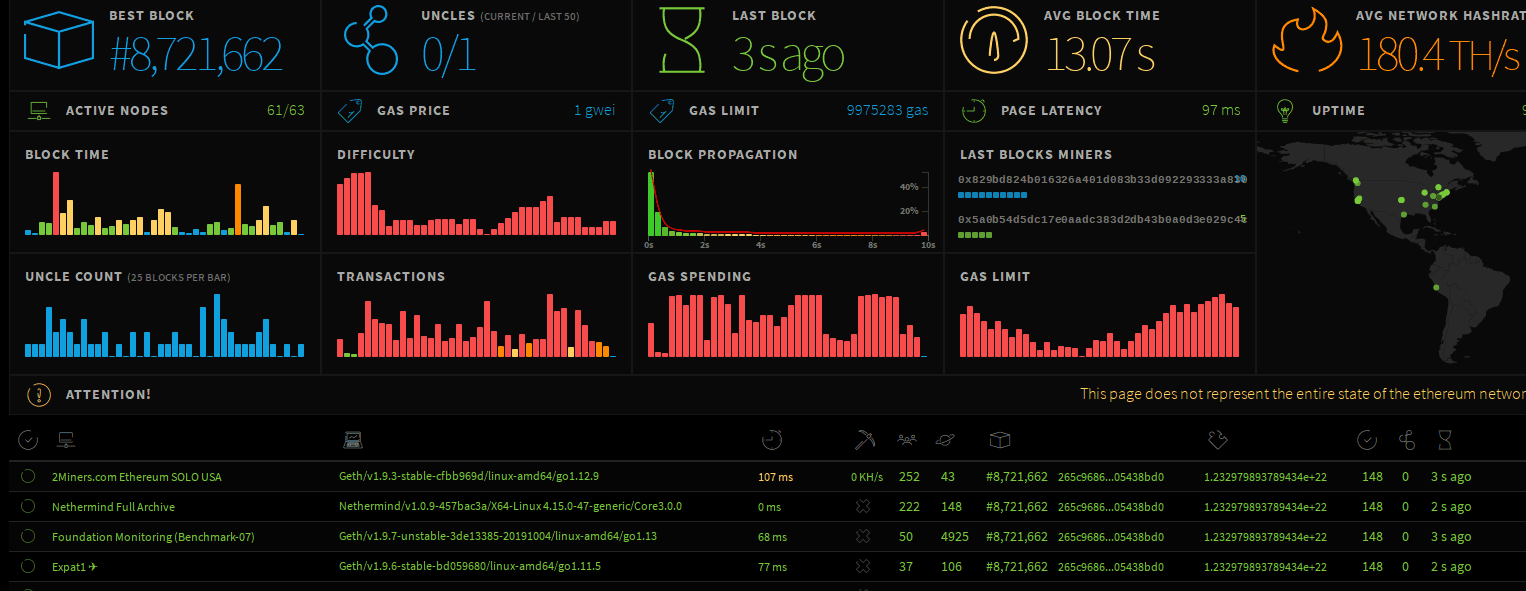
There are varied ideas on Ethereum and comparisons with fiat have been made with the corresponding backlash from the crypto community.
Pompliano’s comment that Ethereum and fiat as being one and the same were met with heavy criticism. Erik Voorhees, who is the founder of instant digital asset exchange ShapeShift, responded to the blog by stating that Ethereum and state-backed currencies are, in fact, two very contrasting concepts.
The value of fiat currency is decided by a country’s government instead of a physical commodity. However, cryptocurrencies like Bitcoin and Ethereum, as well as speculative assets like gold, are traded in open markets. People decide their value and for this reason, ETH CANNOT be valued the same as a fiat, explained Voorhees.
How to get paid to mine Ethereum

After successfully completing mining one block of Ether transactions, the crypto miner is qualified to receive a reward of three Ether tokens. On top of the reward, they are also entitled to get the fees associated with any Ethereum transaction verified at the specific block. Those fees serve as incentives to motivate the miners to continue doing their work, as the majority focus on transactions with higher fees to increase their mining revenues. The rewards are afterward transferred to the Ethereum wallet address associated with the miner or pool instantaneously.
The average income generated can be calculated depending on your total computing power or hash rate and electricity consumption. Besides, you should also remember to include the cost of your hardware and the probable bandwidth upgrade. A number of Ether profitability calculators can be obtained from platforms like Cryptocompare, MyCryptoBuddy, CoinWarz, and WhatToMine.
How to join a mining pool
For the newbies, joining an Ethereum mining pool can translate into more profits compared to a solo Ether miner. A pool refers to a group that combines their resources including computational power to raise their speed of solving mathematical problems to earn rewards. The proceeds are then split between the participants depending on the amount of computational power contributed.
It is simple to join a mining pool since most of them do not even need registration to start mining cryptocurrency. However, to join some of them, you have to undergo registration on the pool’s website. Ethpool and Ethermine is currently the largest Ether mining pool contributing to about 25 percent of ETH’s hashing power. Despite having two different websites, it is one giant crypto-mining pool.
Some of the other notable pools include DwarfPool, the third-largest pool contributing about 13 percent of the network’s hash rate, and Ethfans and f2pool, the second and fourth-largest pools on the network. The latter two mining pools are only available in Chinese, which might not be suitable for some readers. The lastly named two are only available in China which might inconvenience some readers. Additionally, the same mining pools often offer to mine Ethereum Classic as an additional option.
